
Part 1: Introduction
In the digital age, many people still limit the potential of AI to content writing and marketing. However, in reality, AI has been and is expanding its influence into every aspect of business operations, becoming an indispensable assistant.
“You are competing with marketers using AI,” emphasized a Google expert at a recent event. This highlights that the real competition is not between humans and AI, but between those who know how to leverage AI and those who have yet to adopt this technology.

Benefits of AI for Startups
- Accelerated Research and Analysis
- Rapid market data processing
- Detailed competitor analysis
- Accurate demand forecasting
- Cost and Risk Optimization
- Reducing the cost of testing ideas
- Simulating business scenarios
- Evaluating project risks
- Stimulating Creativity
- Proposing new perspectives
- Generating breakthrough solutions
- Combining unique ideas
Part 2: Applications of AI in Practice
Areas Where AI is Making a Difference
The World Forum event “Put AI to Work For People” (Toronto, November 2024), shows that AI is creating strong impacts in every aspect of business operations.
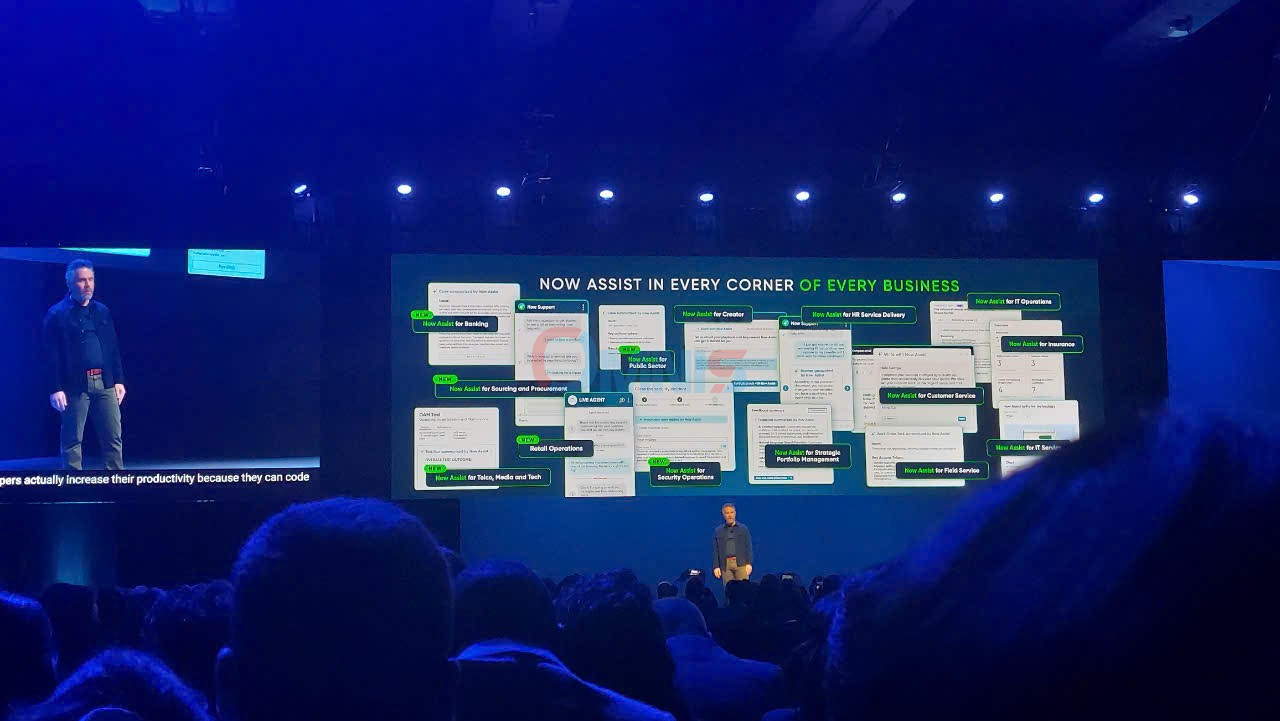
AI is creating many impacts in:
- Automating Work Processes
- Automated email responses
- Summarizing support tickets
- Technical issue resolution
- Human resource management (HR)
- Optimizing supply chains
- Content Creation and Marketing
✨ Real-Life Example:
- Scriptwriting for viral TikTok videos
- Writing multi-platform content marketing
- Designing advertising images
- Creating product prototypes
- Market Research and Analysis
📊 Analysis Tools:
- Calculating TAM, SAM, SOM
- Analyzing market data
- Forecasting industry trends
- Evaluating competitors
💡 Pro Tip: Combining multiple AI tools will yield the best results. For example, use ChatGPT for brainstorming ideas, Midjourney for creating images, and analytical tools for validation.
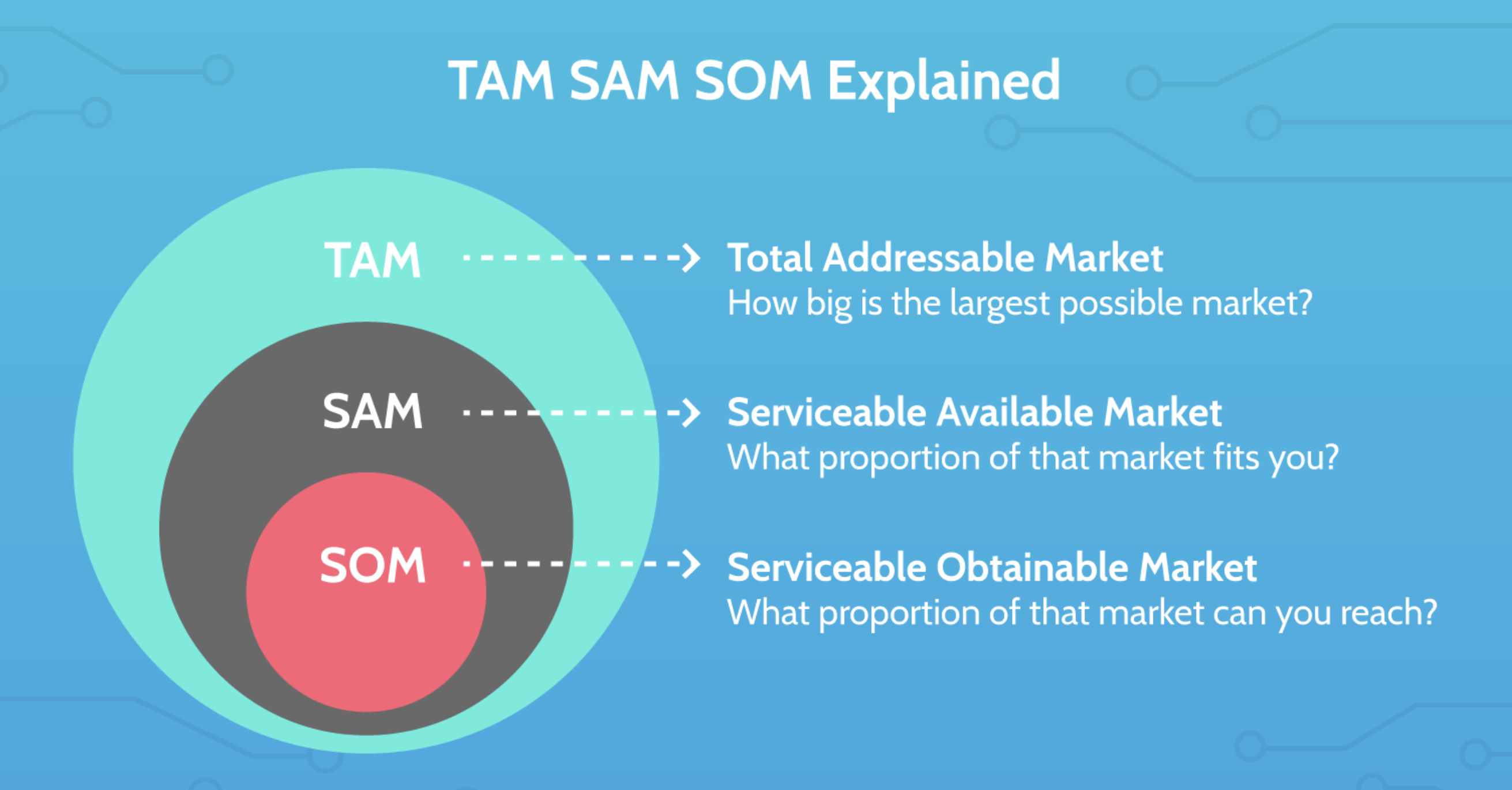
Part 3: Case Studies and Practical Guidance
Real-Life Demonstrations: Applying AI in Business
Case Study 1: AI Business Model Canvas
Sample Prompt:
“Help me build a business model canvas for Price Glance Inc. – A SaaS competitor price monitoring tool for retailers”
📝 Detailed Reference: Link to Business Model Canvas
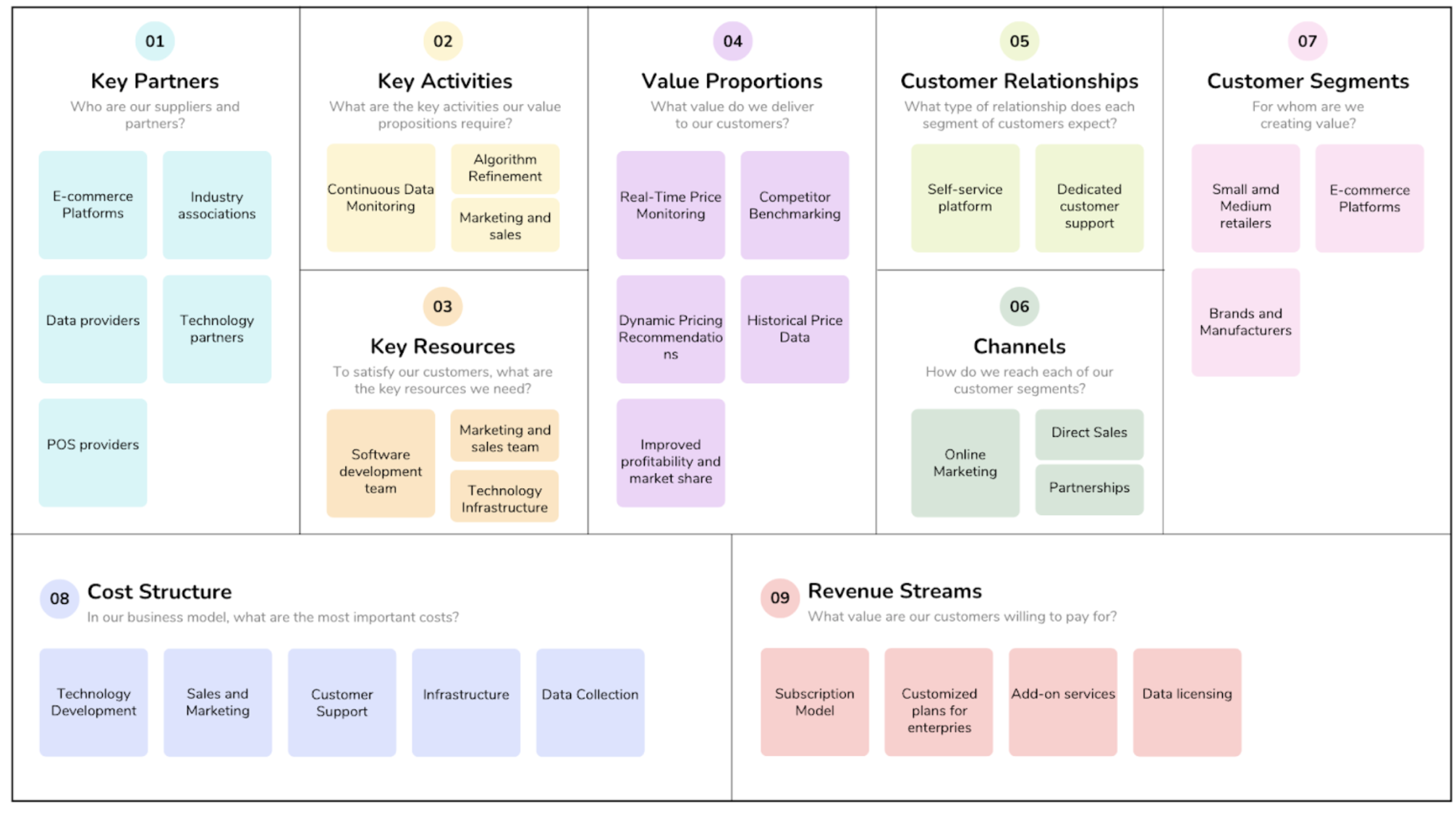
Case Study 2: Market Survey with AI
Sample Prompt:
“Suppose you have 10 years of experience conducting market surveys. Help me conduct a market survey for PG Project, a SaaS competitor price monitoring tool for retailers. Begin with the outline, and then go to the details.”
Case Study 3: Designing a Survey Questionnaire
Sample Prompt:
“Suppose you have 10 years of experience conducting market surveys for the Canadian market. Help me design a questionnaire survey for PG Project, a SaaS competitor price monitoring tool. The study’s objective is to explore the demand for products and buyer personas.”
💡 Important Note: When using AI to create a survey, you can ask AI to generate mock data to test the effectiveness of the questionnaire before deploying it in real life.
Case Study 4: Smart Warehouse Management
Case Study 5: Making Content Marketing with AI
Sample Prompt:
“Write a native ad focusing on sharing and guiding the automation of warehouse management to optimize costs and operations. Share a real-life story of someone who has used Smart Warehouse services and succeeded.”
Part 4: Writing Prompts and Techniques for Interacting with AI
Levels of Prompts
Simple Prompts
- Characteristics: Direct, concise
- Example: “Write an introduction about Smart Warehouse.”
- Suitable for: Simple requests that do not require complex details.
Standard Prompts
Structure with 4 Parts:
- Task (the task to be performed)
- Context (background information)
- Examples (illustrative examples)
- Format (desired output format)
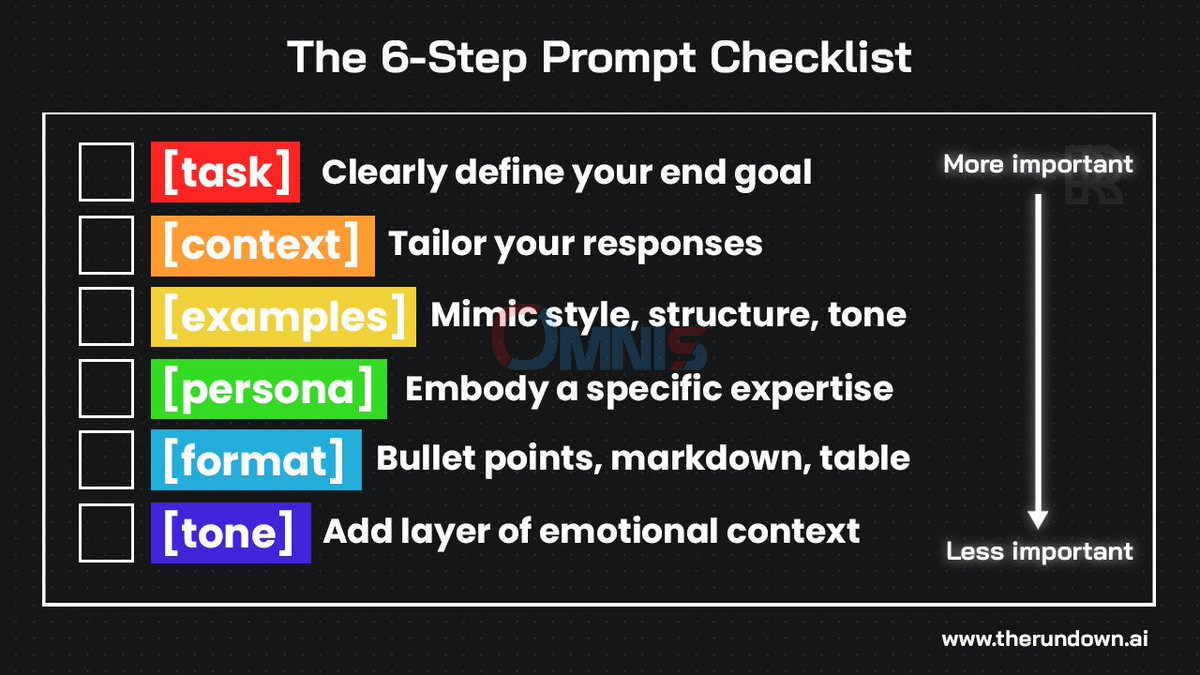
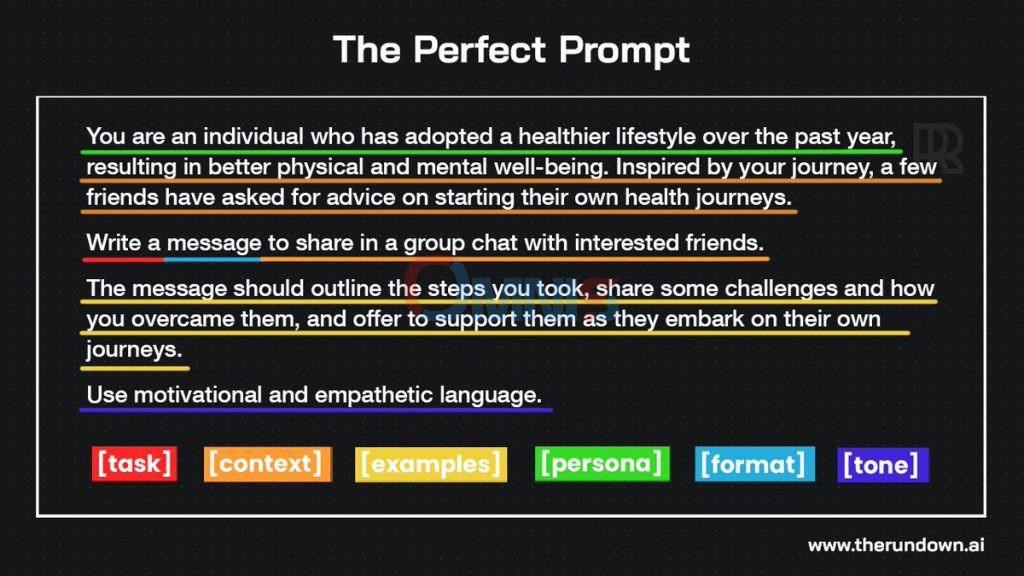
Advanced Prompt Techniques
A. Zero-shot Prompting
- Definition: Requesting AI to perform a task directly without examples.
- Advantages: Quick and straightforward.
- Disadvantages: May not be as accurate as desired.
B. One-shot/Few-shot Prompting
- Definition: Providing one or a few example samples.
- Advantages: More accurate results.
Example:
Input: Write a welcome email to customers.
Example: “Dear [Name],
Thank you for your interest in our services…”
Your turn: Write a meeting invitation email.
C. Chain-of-Thoughts
- Characteristics: Breaking down complex issues into steps.
- Effective for: Complex requests that require reasoning.
Complex Prompts (Advanced)
5-Step Process:
Step 1: Establish Context:
- Please read and analyze the attached file. What do you understand?
- Ask me questions if you need clarification.
Step 2: Confirm Information:
- Filter and check AI’s understanding.
- Provide additional information as needed.
Step 3: Request Specific Tasks:
- Based on the information you have gathered, please [perform the task]…
Step 4: Check Results:
- Request mock data or mockups.
- Ensure the results meet expectations.
Step 5: Refine and Repeat:
- Use the results as examples.
Repeat the process until achieving the best results.
💡 Pro Tip: You can ask AI to write prompts for you, then use those prompts to perform the tasks.
Part 5: Conclusion
Summary of AI’s Role
Strengths:
- High Efficiency: Quickly addresses issues with instant results.
- Diverse Perspectives: Opens up new approaches.
- Resource Optimization: Saves significant time and costs.
- Flexibility: Can be applied across various fields.
Considerations:
- Content may become formulaic.
- Requires careful review and validation before use.
- For high-stakes requests, additional depth is needed.
Recommended Applications
📌 Implementation Process:
- Start with simple tasks.
- Experiment and evaluate effectiveness.
- Gradually expand the scope of application.
- Combine AI with human expertise.
💡 Important Note: AI does not replace humans; it is a supportive tool to make more informed decisions.
Future Trends
🔮 Development Forecast:
- AI will become increasingly intelligent and versatile.
- Deeper integration into operational processes.
- Creation of new value for society.
Final Thoughts
In the digital era, applying AI is no longer an option but a vital factor for businesses. By using the right methods and tools, AI will become a valuable partner, helping businesses optimize operations and create sustainable competitive advantages.
—
Start Your AI Journey Today
🚀 Take Action Now:
- Choose a simple task in your work.
- Apply the sample prompts we shared.
- Document the results and lessons learned.
Share Your Experience
📢 Join the Community:
- Share your success stories in the comments.
- Ask questions and engage with other members.
Get Support
🤝 We Are Here to Help:
Subscribe to our newsletter for tips and updates.
💡 Share to Grow Together: share your results on social media with the hashtags #AIforBusiness #StartupAI.
Are you ready to start your AI journey? Let us know in the comments how you plan to apply AI in your business!.
